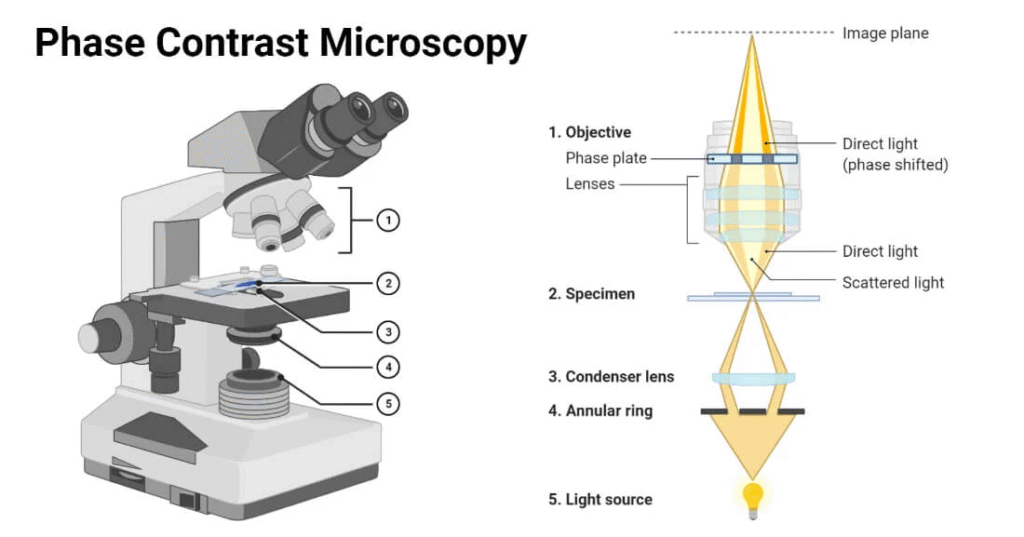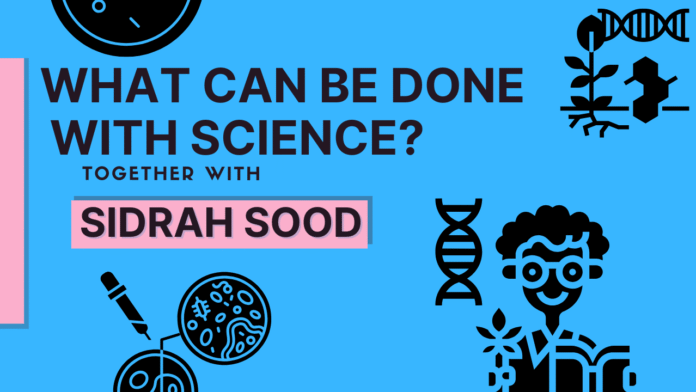Have you ever wondered about the tiny, invisible creatures living all around us—on surfaces, in the air, even inside our bodies? It’s like there’s a hidden world we walk through every day without noticing. That curiosity is what pulled me into microbiology. Taking an introductory course opened my eyes to how powerful and fascinating microorganisms really are.
This blog is where I’ll share what I learn as I take my first steps into this incredible field.
What We’ll Explore in This Series
Throughout this blog series, we’ll dive into:
- What microbiology is and what counts as a microorganism
- How microbes affect our health, environment, and daily lives
- The pioneering scientists and discoveries that shaped microbiology
- Key experiments like Pasteur’s flask experiment and Koch’s postulates
- The tools that make it all visible—from light to electron microscopes
What Is Microbiology?
Microbiology is the study of tiny life forms—and I mean really tiny! We’re talking about organisms you can’t see with your naked eye: bacteria, viruses, fungi, and other microscopic creatures.
Sounds small, right? But here’s the thing—these little guys practically run the show. They’re everywhere: in the air we breathe, the soil beneath our feet, the food we eat, and even inside our own bodies! Some help us digest food, others help make cheese and bread, and yes, some do cause diseases. But not all of them are harmful. In fact, we wouldn’t survive without most of them.
For me, microbiology feels like exploring a secret universe—one that’s always been there but hidden from us. It’s exciting to think that these invisible organisms are working behind the scenes 24/7, keeping life’s cycles running smoothly.
Types of Microorganisms

Now that we know what microbiology is, let’s look at what actually counts as a microorganism.
Microorganisms vs. Non-microorganisms: What Counts as Microbial Life?
Simply put, a microorganism is tiny and needs a microscope to be seen. This includes:
BACTERIA – Single-celled organisms found virtually everywhere on Earth
FUNGI – Including yeast and mold (the fuzzy stuff that grows on old bread)
PROTOZOA – Animal-like microbes that swim around in water
ALGAE – Plant-like microbes, commonly found in aquatic environments
Some PARASITES – Especially those that live inside another organism (called a host)
What About Viruses?
Viruses are a bit controversial. They’re incredibly small—way smaller than bacteria—and they do infect living things. But here’s the catch: they can’t reproduce or carry out life processes on their own. They need a host cell to do literally anything.
Some scientists don’t consider viruses true microorganisms because they’re not technically “alive.” We do study them in microbiology, but they exist in their own strange category.
How Microbes Impact Our World
Let’s explore why microbiology actually matters in everyday life, nature, and medicine!
Despite their size, microbes play a massive role in keeping our world balanced and functioning.
The Good Guys
In our bodies: Beneficial microbes help us digest food and fight off harmful invaders.
In nature: Microbes break down waste materials, recycle nutrients, and help plants grow.
In industry: We use microbes to make cheese, yogurt, bread, and even medicines like antibiotics and vaccines!
The Not-So-Good Guys
But like everything else, microbes have their pros and cons. Sometimes they’re not so friendly and can cause diseases—from the common cold to serious infections.
Harmful microbes are called pathogens, and they’re one of the big reasons microbiology is such an important field. They can cause:
- Tuberculosis (caused by Mycobacterium tuberculosis)
- Malaria (caused by a protozoan called Plasmodium)
- Influenza (caused by the flu virus)
- Ringworm (a fungal infection)
- COVID-19 (caused by the coronavirus SARS-CoV-2)
These are just a few examples that show how dangerous microbes can be when they turn against us. Studying them helps us develop better treatments, create vaccines, and stop outbreaks before they spread. The more we understand them, the better we can protect ourselves and use them to our advantage.
A Look Back: How Microbiology Got Its Start
To really understand what we study today, we need to know how it all began. The science we know today started with curiosity and simple tools, leading to groundbreaking discoveries that changed how we see the world.
The First Man to See the Invisible
The first person to observe the microscopic world was Antonie van Leeuwenhoek, a Dutch cloth merchant in the 1600s. He wasn’t a trained scientist, but he was incredibly curious. Using handmade microscopes with simple lenses, he looked at a drop of water up close—and what he saw changed science forever.
He discovered tiny, moving creatures swimming in the water, which he called “animalcules” (little animals). These were the first recorded observations of bacteria and protozoa. Although he didn’t fully understand what he was looking at, he opened the world’s eyes to life on a microscopic scale.
The 19th Century: Pasteur Brings Science
Two centuries later, French chemist Louis Pasteur took microbiology to the next level. During his time, many people believed in “spontaneous generation”—the idea that living things could just appear from non-living materials.
Pasteur argued that life couldn’t come from nowhere—any germs or life forms must come from other similar life forms.
Pasteur’s Famous Experiment
PASTEUR’S SWAN-NECK FLASK EXPERIMENT

This experiment proved that life doesn’t come from nothing—it comes from existing life. This principle is called biogenesis.
Pasteur also demonstrated that microorganisms could cause diseases, establishing the germ theory of disease—the revolutionary idea that specific microbes cause specific illnesses.
Robert Koch: Proving the Connection
German physician Robert Koch was working to prove that particular bacteria could cause specific diseases. He studied anthrax, a deadly disease affecting cattle and humans.
Through careful experimentation, Koch:
- Injected healthy animals with blood from sick animals
- Observed rod-shaped bacteria in infected blood
- Isolated and grew these bacteria in laboratory cultures
- Proved that these bacteria were responsible for the disease
This work led to Koch’s Postulates—four steps to prove that specific microbes cause specific diseases.
Koch’s Postulates
- The microorganism must be found in all organisms suffering from the disease, but not in healthy individuals.
- The microorganism must be isolated from the diseased host and grown in pure culture.
- The cultured microorganism should cause the same disease when introduced into a healthy, susceptible host.
- The microorganism must be re-isolated from the experimentally infected host and identified as the same original organism.
MICROORGANISMS
| BACTERIA | FUNGI | PROTOZOA | ALGAE |
|---|---|---|---|
| Single-celled | Yeast | Animal-like microbes | Plant-like |
| Found everywhere | Mold | Swim in water | Aquatic |
| Some helpful | Mushrooms | Some cause disease | Photosynthetic |
| Some harmful | Decomposers | ||
| Food makers |
While groundbreaking for their time, these postulates aren’t perfect for all modern diseases. Some limitations include:
- Viruses and some bacteria can’t grow in pure culture
- Some pathogens change when grown in laboratories
- Some diseases result from combinations of microbes
- Some organisms can cause multiple diseases
Disease Discoveries
Koch’s methods made it easier to identify disease-causing agents. In the following years, scientists identified many pathogens:
| Disease | Year Discovered | Causative Agent |
|---|---|---|
| Anthrax | 1876 | Bacillus anthracis |
| Malaria | 1880 | Plasmodium species |
| Tuberculosis | 1882 | Mycobacterium tuberculosis |
| Cholera | 1884 | Vibrio cholerae |
These discoveries led to the development of antibiotics and treatments that prevented countless deaths. But before scientists could fight these microbes, they first had to see them—and for that, they needed the right tools.
The Tools That Make It All Visible
Light Microscopes: How We First Saw the Microbial World
Light microscopes use visible light and glass lenses to magnify tiny specimens, allowing scientists to see cells, bacteria, and other microorganisms that were once completely invisible. This is the same basic tool that van Leeuwenhoek used for his first observations.
How Light Microscopes Work

Light microscopes work through refraction—the way light rays bend when they pass through glass. The basic principles:
- Rays parallel to the lens axis pass through the focal point
- Rays entering at the focal point emerge parallel to the axis
- Rays through the lens center remain straight
Key Concepts: Magnification, Resolution, and Contrast
Resolution is the ability to distinguish between points that are very close together. The human eye can resolve two points about 0.2 mm apart, while light microscopes can resolve points as close as 0.2 micrometers (0.0002 mm) apart.
Electron Microscopes: Seeing the Invisible in Ultra Detail
As powerful as light microscopes are, they have limits. Some microbes and cellular details are too small to see with light alone. That’s where electron microscopes come in.

Electron microscopes use high-voltage electron beams instead of light. These beams have much shorter wavelengths, achieving resolution of 1-2 nanometers and magnification over 100,000x—powerful enough to see virus structures and cellular organelles.
Types of Electron Microscopes
Transmission Electron Microscope (TEM)
- Electrons pass through ultra-thin specimens
- Shows fine internal details like organelles
- Produces flat, highly detailed black-and-white images
Scanning Electron Microscope (SEM)
- Electrons bounce off the specimen surface
- Creates detailed 3D images of external structures
- Great for viewing shapes and surface textures
TEM vs SEM COMPARISON

What We’ve Learned So Far
Light microscopy helped us discover microbes. Electron microscopy helped us truly understand them.
From understanding what microbiology really means to exploring different types of microbes, seeing how they shape our world, and learning about the scientists who pioneered this field using increasingly powerful microscopes—it’s amazing how much activity happens in the microscopic world around us every day.
This is just the beginning of our journey into microbiology. In future posts, we’ll dive deeper into specific types of microorganisms, explore more modern techniques and discoveries, and continue uncovering the secrets of the invisible world that surrounds us.
The microscopic world is vast, complex, and absolutely fascinating. I can’t wait to share more discoveries as I continue learning about these incredible tiny life forms that have such a huge impact on our world.
What aspect of microbiology interests you most? Share your thoughts in the comments below, and let me know what you’d like to explore next in this series!

